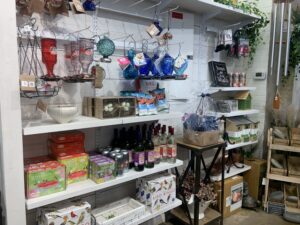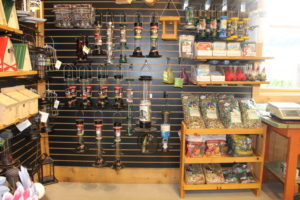The Sky’s the Limit
When Southwest Airlines sashayed onto the scene in 1971, there was no question that the then three-aircraft airline serving three Texas cities was the underdog. For its giant competitors who dominated the skies, the quirky company with a fun-loving attitude and low fares probably seemed like no big threat. Fast-forward some 36 years, and Southwest Airlines has become a force to be reckoned with, lauded for its unique corporate culture, “positively outrageous” customer service, innovation and affordability. Nowadays, other major airlines keep a careful eye on Southwest’s every move and pay close attention to its business strategy, which has yielded impressive results and loyalty among satisfied customers and employees.
With independent retailers locked in perpetual battle with big boxes, Southwest Airlines’ strategy can give you some useful pointers in your quest to evolve from “little guy” to major player. And as Southwest Airlines’ story proves, you don’t have to sacrifice your focus on customer service, unique spirit or any other value you hold dear to get there.
Taking Off
The beginnings of the company trace back to a cocktail napkin; where 36 years ago, founder Herb Kelleher and businessman Rollin King sketched what would become the “Texas Triangle,” a route structured to connect Dallas, Houston and San Antonio, according to the Southwest Airlines website. Within three years of its first flight, the Texas-based company was operating profitably and had carried more than one million customers. Today, Southwest operates more than 500 Boeing 737 aircraft between 64 cities across the United States, and more than 96 million passengers travel annually on the airline, making Southwest Airlines the largest air carrier in the United States (in terms of domestic boardings). Last year, FORTUNE magazine ranked Southwest airlines as No. 5 among America’s top 10 most-admired corporations across all industries.
The 34 consecutive years of profit that followed the first uncertain couple of years make one thing clear, says company spokesperson Ashley Rogers: “It was kind of a crazy idea, how we got started. But all of our employees hold a stake in the company, and so they’re going to work hard to keep it above ground. That’s something that has shown through year after year.”
The Southwest Way
If there’s one thing that’s unique about Southwest Airlines, it’s the company’s culture, Rogers says. By focusing on providing outstanding customer service and putting forth every effort to ensure that employees feel valued, the company continuously “cultivates the Southwest spirit,” she adds. This “culture” is showcased in big ways, such as empowering employees to make decisions with the knowledge that Southwest Airlines stands behind them, and smaller ways, like the cheerfully decorated cubicles at corporate headquarters, frequent celebrations of employees’ achievements and special occasions, and the fact that office romances are encouraged. In fact, the airline keeps a “scrapbook wall” of wedding pictures of married co-workers, which makes sense considering the airline’s stock exchange symbol is LUV. “We’re here to have fun,” Rogers says. “We get work done, but the three things we look for in our employees are a warrior’s spirit, a servant’s heart and a fun-loving attitude.” The company actually has two separate mission statements, one for customers and another one for employees.
Every payday, employees are reminded of the importance of customer service: Their paychecks are signed “From Our Customers,” a vivid symbol of the company’s commitment to its customers. Southwest employees are known for greeting passengers with a smile, going above and beyond the call of duty to make their traveling experience easy and breezy, and even singing in-flight instructions to customers once in a while. “Positively Outrageous Customer Service,” as the company describes it, is stressed from day one to all employees, from ground-operation agents to flight attendants. Amid the heavily competitive airline industry, Southwest Airlines strategy was disarmingly simple: “Let’s give people the lowest fare, treat them with respect and a smile, and see where that gets us,” Rogers says. “It’s gotten us far, made us who we are today.” Southwest’s commitment to customer service doesn’t go unnoticed. The airline was named in BusinessWeek’s first-ever list of “Customer Service Champs” in its March 5, 2007, issue.
Inspiring Loyalty
It is this attention to customer service that fosters loyalty in customers. Kirk Perucca, owner of a diversity consulting firm in Kansas City, Mo., and a frequent Southwest Airlines flier, says he has driven up to 150 miles to get to an airport that houses the airline. Since 1995, Perucca has flown almost exclusively via Southwest. For the businessman, who often flies once a week for work, the airline is the obvious choice. “Anytime I fly, my first choice is Southwest.” Why? The reasons Perucca lists off are many and varied: “As a business owner, I like that it’s not going to cost me an arm and a leg. The fares are fair. I like to be rewarded for my loyalty [through the airline’s Rapid Rewards program], and I feel like they really do care about me as a passenger.”
Perhaps most importantly, Perucca appreciates how safe, fun and fast the airline strives to make the often-stressful traveling experience. “My motto for travel is easy, quick, done, gone. I love Southwest because of that. It’s easy, quick, they get it done and I’m gone.”
As an independent retailer, you probably already recognize the value of making customer service and employee retention a priority. Put simply, it’s smart business sense. This personal touch and the loyalty it inspires in customers and employees alike are what differentiate you from big boxes and can take your business to the next level.
A Reputation for Innovation
Southwest Airlines prides itself on being an innovator. In July 2007, the airline was included in the Top 100 Most Innovative Technology Organizations by InformationWeek magazine. And the distinction appears to be well deserved. In 1995, the airline introduced “ticketless travel,” saving tons of money on paper and making the boarding process that much more efficient for passengers and employees. “It was a huge step forward,” Rogers says. “We were the first to do this. We’ve always been ‘that one.'”
The airline was also the first to establish a home page on the Internet, according to Southwest Airlines. In June 2004, Southwest Airlines celebrated the launch of its Spanish booking engine, southwest.com/vamonos, where customers can make flight reservations and find helpful information entirely in Spanish, making the airline among the first major airlines to offer the service. In February 2005, Southwest also introduced DING!, a downloadable desktop application available for both Windows PC and Apple users that notifies customers of exclusive hot offers.
By remaining on the cutting edge of your industry, as Southwest strives to do within the aviation field, garden center owners can keep their business modern and appealing to the coveted X and Y generations.
Embracing Change with Gusto
As recently as the end of 2007, Southwest Airlines implemented two major changes: an enhanced boarding process and Business Select fares. But before moving forward with these changes, the company made sure to really listen to its customers. “We’re trying to cater to our customers and see what they need,” Rogers says. “We’re also trying to stay current and evolve while still keeping our Southwest way and uniqueness.”
Tweaking a trademark. After polling customers extensively, the airline decided last November to keep its trademark open seating, but they adopted an improved boarding process that eliminates the need for customers to “camp out” to get a good seat, states CEO Gary Kelly in a company blog.
Trying something new. The new Business Select fares are the airline’s “first concrete push in its 36-year history to win corporate travelers,” reports the Chicago Tribune in a November 2007 article. The fares are priced about 10 percent above its regular nonrefundable tickets and will guarantee travelers a spot in the first group of passengers to board the plane and a free cocktail once they’re in the air, states the Tribune.
Competition in the airline industry is brutal, which rings true for independent retailers trying to compete with big boxes. Kelly recently addressed the need to embrace change “with gusto” to remain relevant to how people are living today. During Princeton University’s Business Today magazine international conference, in which students from countries all over the world convened in New York to study companies that are leaders in sustainable growth, Kelly stated, “We are in what I would call a pretty dramatic transformation phase at Southwest Airlines… One of the things we realized recently is that, as good as we’ve been, we’re going to have to be even better at managing change.”
As owners of garden centers, you are intimately familiar with the need to evolve your business to resonate with the new needs of a changing consumer base.
Up, Up and Away!
Another strength of the airline is its ability to offer low fares by curtailing costs and maintaining efficiency. When Southwest Airlines first entered the market, there weren’t many options for affordable travel, Rogers says. “We saw an opportunity to provide low fares to a lot of different people,” she says. “In the beginning, to fly wasn’t as common as it is today. It was viewed as a luxury. We changed that around and offered low fares and more services, and brought travel to the masses.” Taking a careful look at your business plan to ensure you are operating as efficiently as possible, while prioritizing your most valuable assets, is a smart move for any business owner.
As an independent retailer, you might not be able to afford to sell your product at the same discount rates as big boxes (nor should you have to!), but you can encourage customers to spend a few extra bucks at your garden center by offering stellar customer service. And you can minimize turnover costs by cultivating a work environment that encourages employees to take a personal stake in the success of your business. And the perks of embracing a mantra of creative thinking and the willingness to “be the first,” as Southwest Airlines has done, are more than worth the effort.
Our industry is currently undergoing a major facelift, with issues such as sustainability, pay by scan and the need to attract younger shoppers changing the way the industry will look tomorrow. By straddling the fine line between remaining true to your core and embracing innovation, the sky’s the limit for your business.
SIDEBAR
Fun facts
- Southwest’s average passenger airfare is $105.37, and the average passenger trip length is about 836 miles.
- In 2006, Southwest served 61.5 million cans of soda, juices and water; 10.9 mil- lion alcoholic beverages; 5 million bags of pretzels; and 93.8 million bags of peanuts.
- Southwest consumed 1.6 billion gallons of jet fuel in 2006.
- The shortest daily Southwest flight is between Ft. Myers, Fla., and Orlando at 133 miles. The longest daily flight is between Philadelphia and Oakland, Calif., at 2,510 miles.
- Southwest has 1,133 married couples. In other words, 2,266 Southwest employees have spouses who also work for the company.
- Southwest always capitalizes the C in customer and E in employee in all their print and online publications.
- Common Stock is traded under the symbol “LUV” on the New York Stock Exchange.

















 Videos
Videos





